
If you’re into your modified German cars, then Milltek is probably a name you already know. If not, read on!
Milltek have been around since the early 80s. They’ve been making exhausts the whole time, which means they know more than a thing or two about the design, development and manufacture of exhausts systems. Right from the get-go they’ve always had a focus on VAG (Volkswagen Group) vehicles.
While this is still probably the brand they are best known for, they cover a surprisingly wide range of non-VW vehicles. Focussing on hot models and performance vehicles, eking out potential from already powerful machinery is the name of the game. Their current development fleet includes the likes of the FK8 Type R and BMW M4.
You may also have spotted Milltek stickers on race cars in one of the disciplines they develop motorsport exhausts for, like the BTCC. Obviously making exhausts for top level motorsport teams is a god-send in terms of learning how to get the most power out of an exhaust system. Being just down the road from Donington Park must help with this!
What do Milltek do?
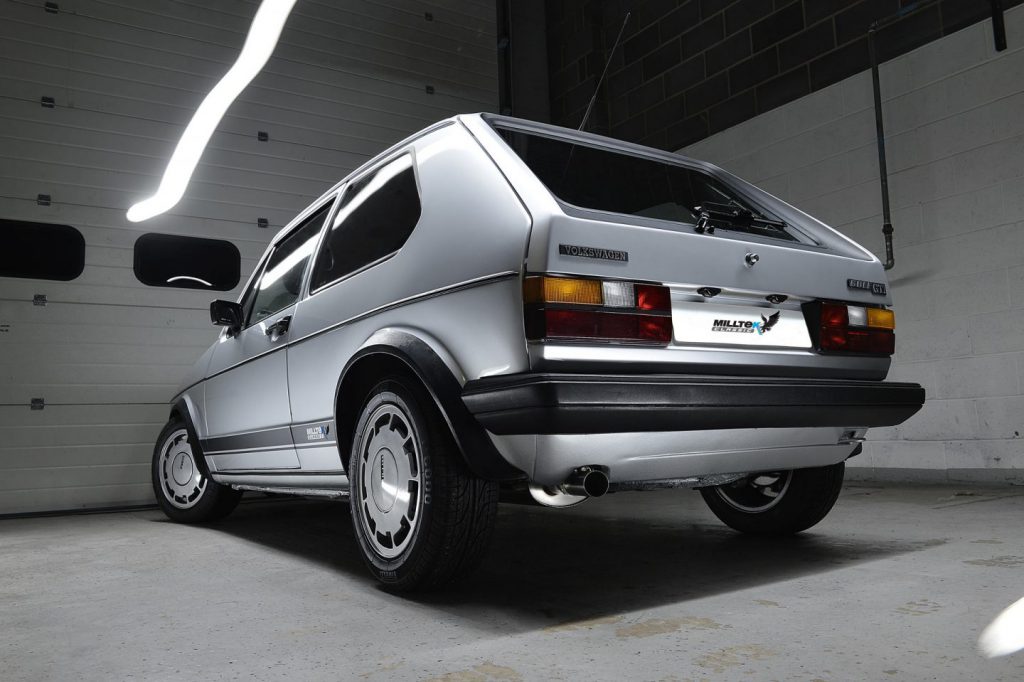
The Golf GTI was in a lot of ways the prototypical “performance car you can daily drive” and Milltek’s association with modified VWs seems to have had an influence on how they make exhausts.
While all manufacturers can make an exhaust that is loud, and many manufacturers can get more performance out of an exhaust, there’s a bit of an art to making a performance exhaust that is pleasant to live with 365 days a year.
If you don’t want your daily to sound like a race car (and some people do, we’re not judging), but do want more power and a sportier sound of it… well, that’s where the engineering happens.
Power and refinement

Milltek carefully tune the sound their exhausts make. They aim to make the car sound like a refined performance car. A lot of time is also spent ensuring that you hear the car when you want to (i.e. when your foot is down), but that it doesn’t blare or drone during normal driving. Milltek take this very seriously. We have seen them advise not fitting an exhaust to the automatic gearbox version of a car, not because it fit differently to the manual version, but because they found in testing that the gearbox holds the engine at a particular rev range which gets annoying. This level of commitment to refinement is genuinely impressive.
Carefully tuned resonators are used on many of their exhaust systems. This is a device that reduces certain sound frequencies while leaving others untouched. If you’ve ever fitted a performance exhaust and come to regret it later on the motorway, this is the one you want.
What is a performance exhaust system?
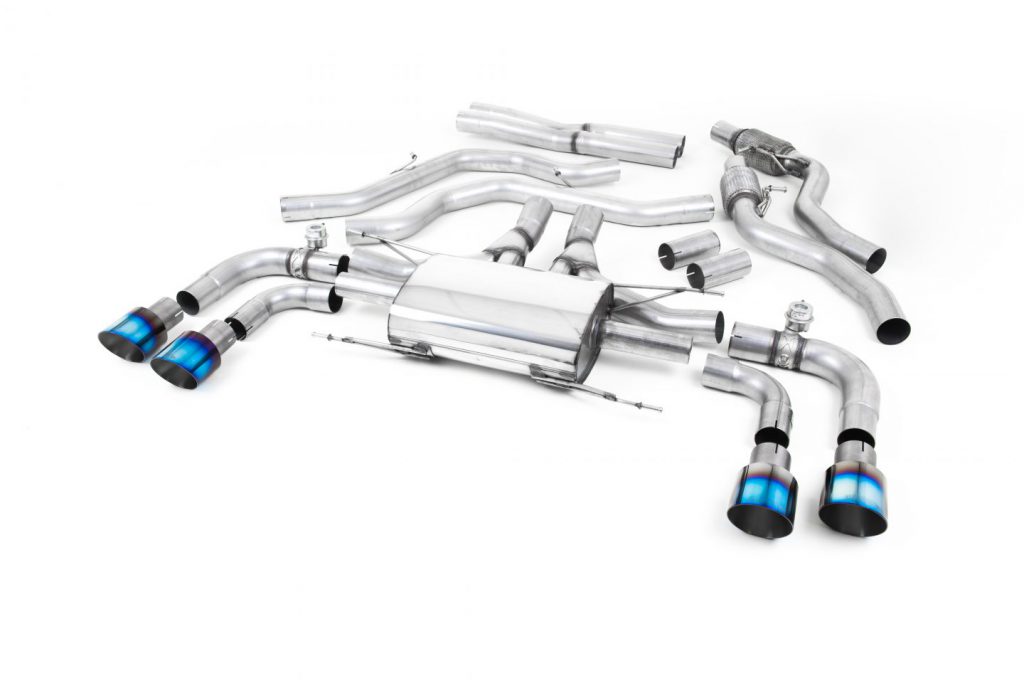
Every exhaust is also carefully engineered to get more power out of your car. Wider, better designed pipework, and less restrictive silencer design all play a part. The quicker, smoother flow of gas you can get out of your engine, the more air it can gulp down at the other end. More air in means more power.
Back Boxes

Replacing just the rear-most silencers in your cars exhaust system with a performance back box can improve the exhaust note immensely. By simply swapping out the rear-most section of the exhaust you can enjoy a totally different Milltek exhaust note. While the improvement won’t be as noticeable as with a cat-back exhaust system, your ears will still thank you for it.
Cat-Backs
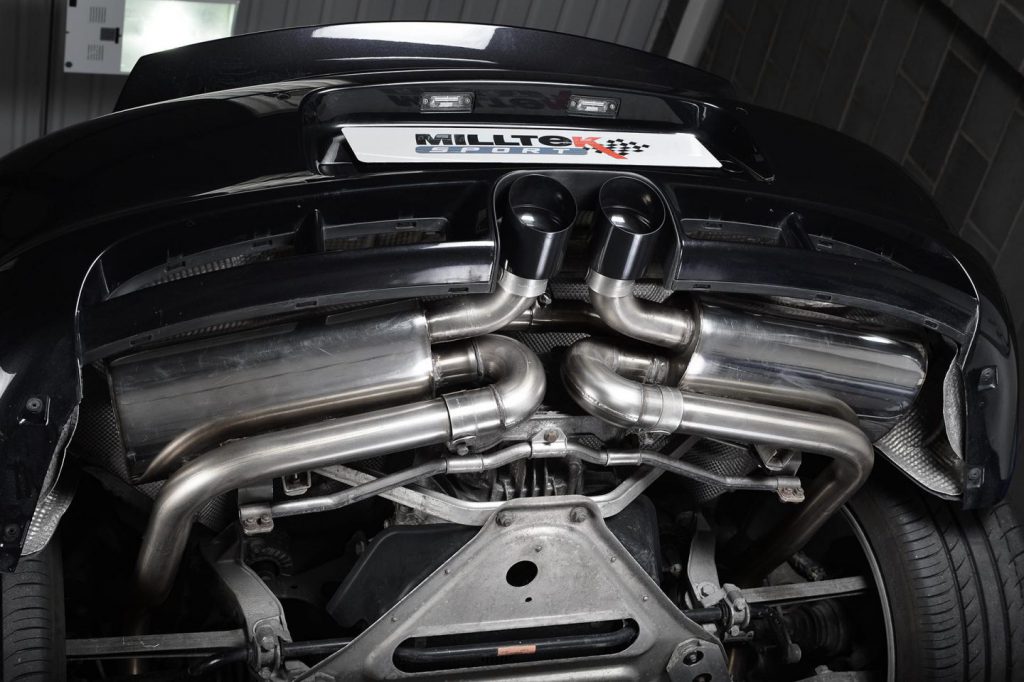
A “cat-back” is usually the section of the exhaust from the rear-most catalytic converter back. Some cars have now Particulate Filters instead of or as well (Diesel Particulate Filter or Gasoline Particulate Filter), but these serve much the same purpose. In those cases, the exhaust runs from the particulate filter back.
Replacing the pipework from the catalytic converter back means you’re replacing the majority of the exhaust system. Milltek typically start with wider bore aircraft grade stainless steel (or if you’re feeling especially fancy, Titanium) pipework. The design of the stock system is looked at and any bends which are restricting flow or introducing turbulence are replaced with smoother pipework.
Better sounding and flowing silencers are swapped in. On some systems you may have a choice of a silencer or a straight through section of pipe. This allows you control over exactly how sporty you want your exhaust to sound.
The total effect is an exhaust system that can unlock real power gains, without you having to worry about remapping your car for a new catalytic converter. Better breathing will let your engine make more power and torque. Less restriction and turbulence will let your turbo do its thing sooner when you put your foot down.
Turbo-Backs, Downpipes, De-cats, and Sports Cats
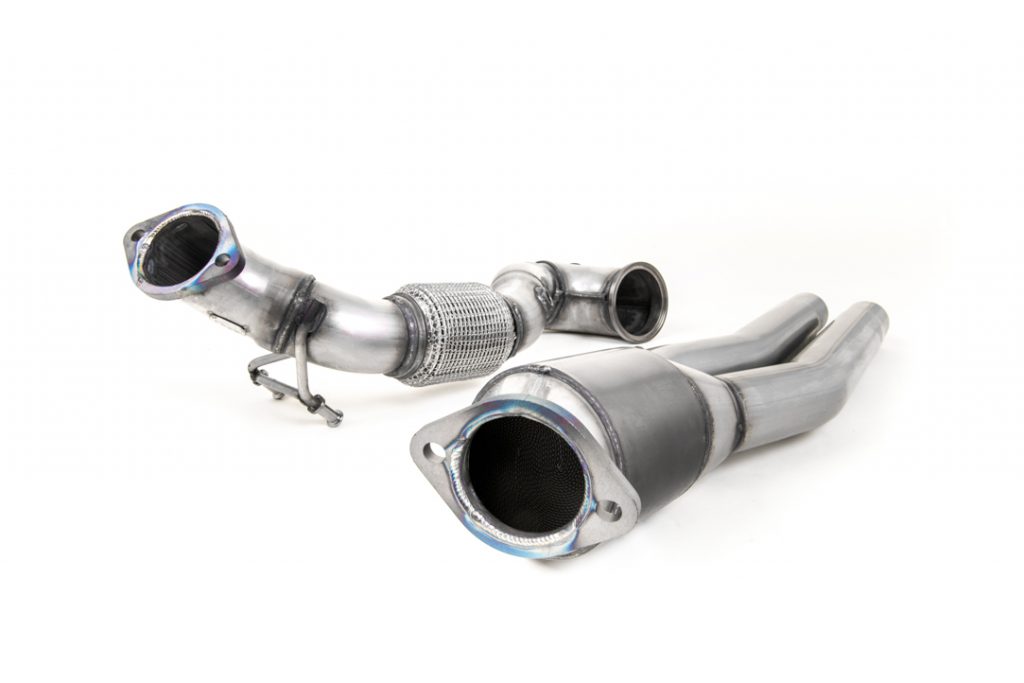
To unlock the best possible power gains, you can also replace the pipework just behind the turbocharger. This is known as the “downpipe” (yes, like in plumbing). Replacing the whole exhaust including this pipework is known as a “turbo-back”, because it runs from the turbo back.
All of the advantages of better flowing pipework we mentioned above go double when you’re talking about the pipework just behind the turbo. Without getting too technical, the less restriction you have on the exhaust side of the turbo, the better the engine works.
The quicker the turbine side of the turbo can get gas out, the more efficiently it runs, and the quicker it spools up. From a pure performance point of view, the best possible exhaust on a turbocharged car is as little exhaust as possible. Back in the real world where you need to go to the supermarket and commute to work, the best compromise is as little restriction as possible.
Downpipes
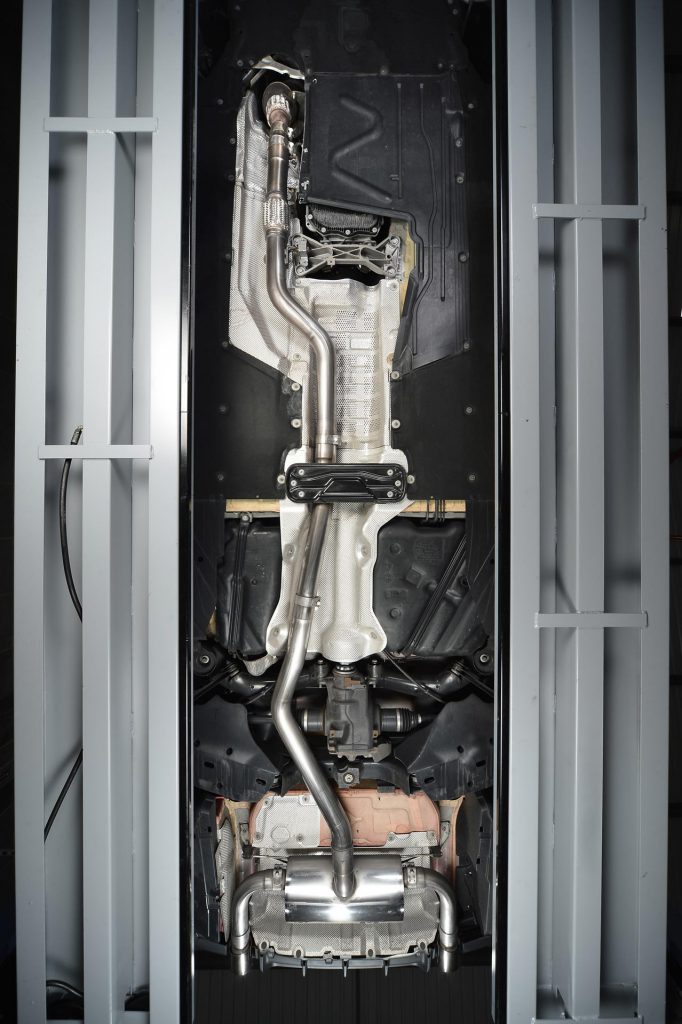
This is where a Milltek downpipecomes in.
It does two things. Firstly, wider bore pipework is used. Improvements to how the pipework connects to the turbo and the rest of the exhaust may also be possible. If you’re fitting the downpipe as part of a complete exhaust system, it also means that you’re not fitting a wider section of Milltek pipework to narrower factory pipework.
Secondly, this section of pipework contains the catalytic converter (or catalytic converters – some cars have several). This is a necessary evil on modern cars. You probably already know that a catalytic converter cleans exhaust gases to reduce the levels of dangerous chemicals.
What you might not know is what the innards of one look like. If you slice one in half, your car won’t work. You’ll also notice that it resembles a honey-comb. This dense structure is part of how it works, but it also makes it the most restrictive part of the factory exhaust. The exhaust gas hits it and slows down. This creates back pressure and limits the amount of performance you can get out of your engine.
Sports-Cats
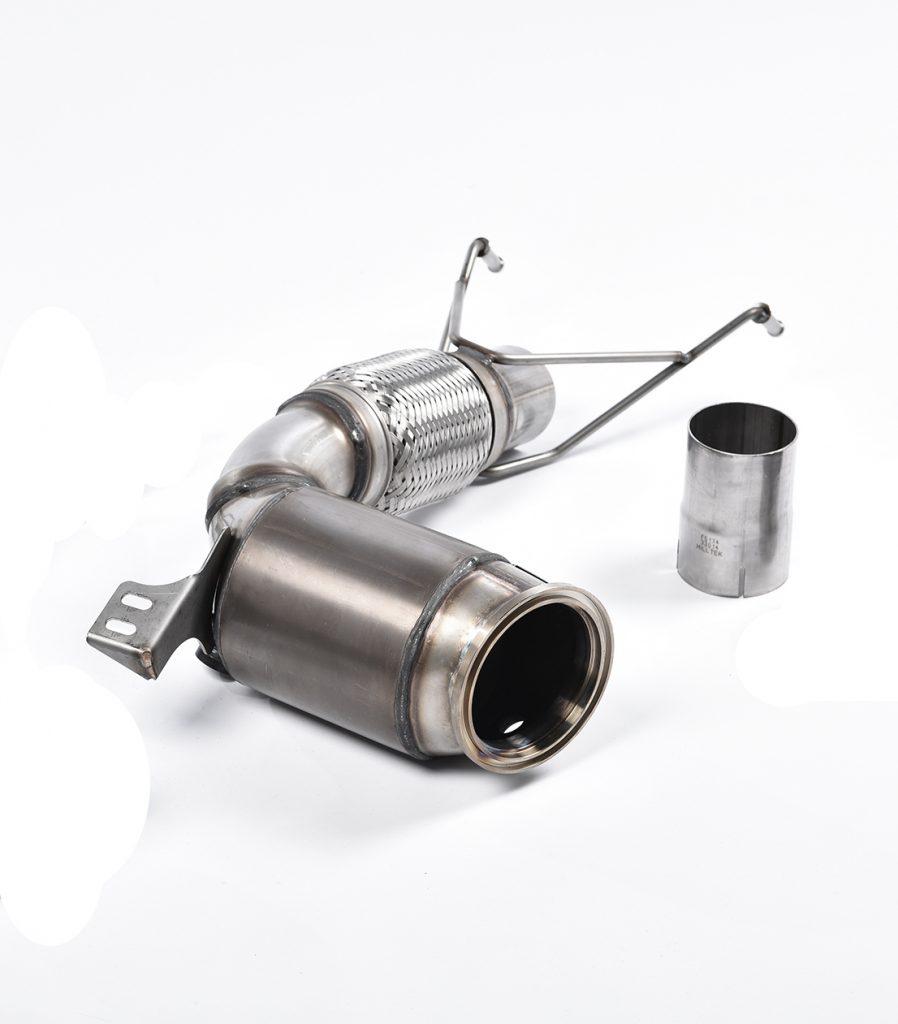
A Milltek downpipe will replace this with either a Sports-Cat or a De-Cat. A Sports-Cat does the same thing as your factory catalytic converter, but it does it better. By using different materials and a less restrictive cross section, flow-rates can be improved significantly. This is almost as good as not having any cat there in terms of performance and should still be road-legal in most places. PLEASE NOTE: Non type approved sports cats cannot legally be installed on a vehicle for use on public roads that was manufactured after 1/3/2001.
De-Cats
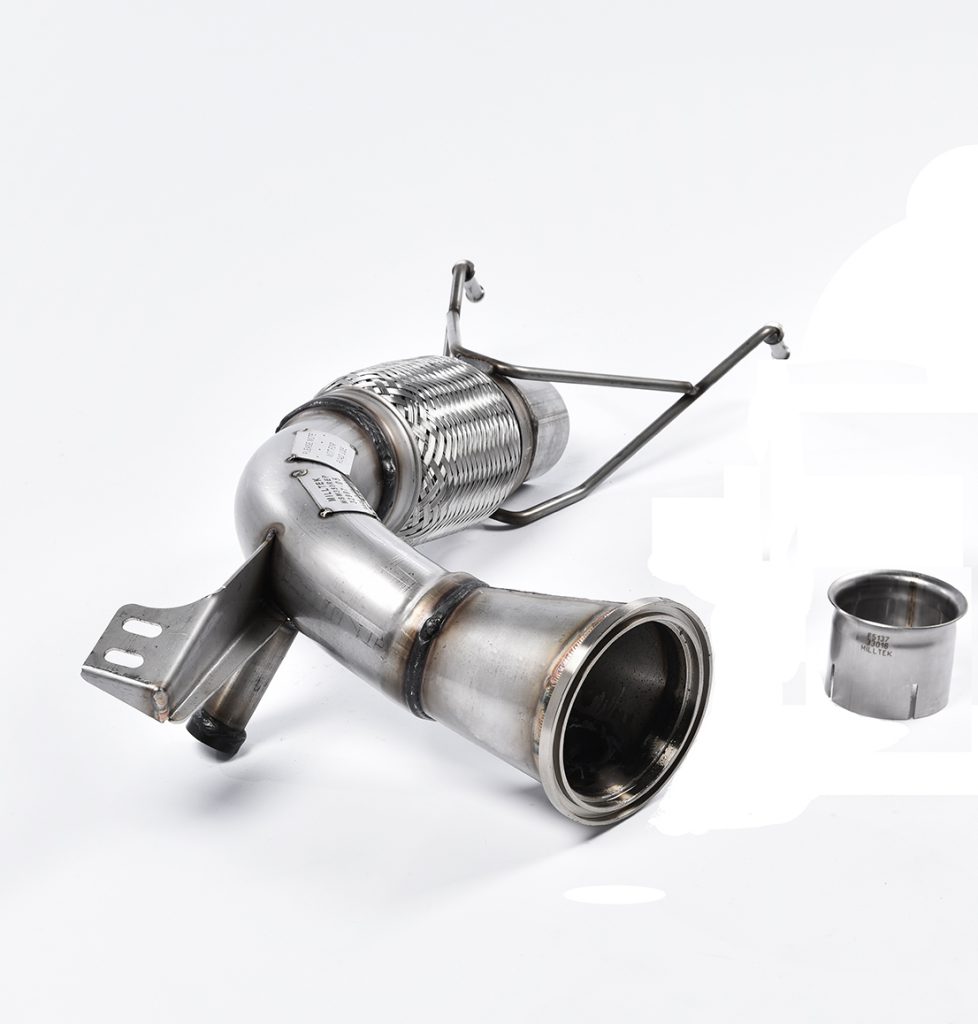
If the vehicle isn’t being driven where a catalytic converter is required, you can do away with the cat entirely. This does offer the best possible performance. We would note that places where this is road legal are few and far between, and that the difference in performance between this and a sports-cat are very minimal.
Remapping

On most vehicles, the ECU (engines brain) has sensors before and after the original catalytic converter(s). Replacing the original cat will significantly change the readings these sensors are getting. Normally you will need to remapto fit a downpipe.
All the latest technology
As with everything on performance cars, exhausts are changing a lot. Theres two big trends we’re seeing on performance cars in this area right now.
Valved Exhausts
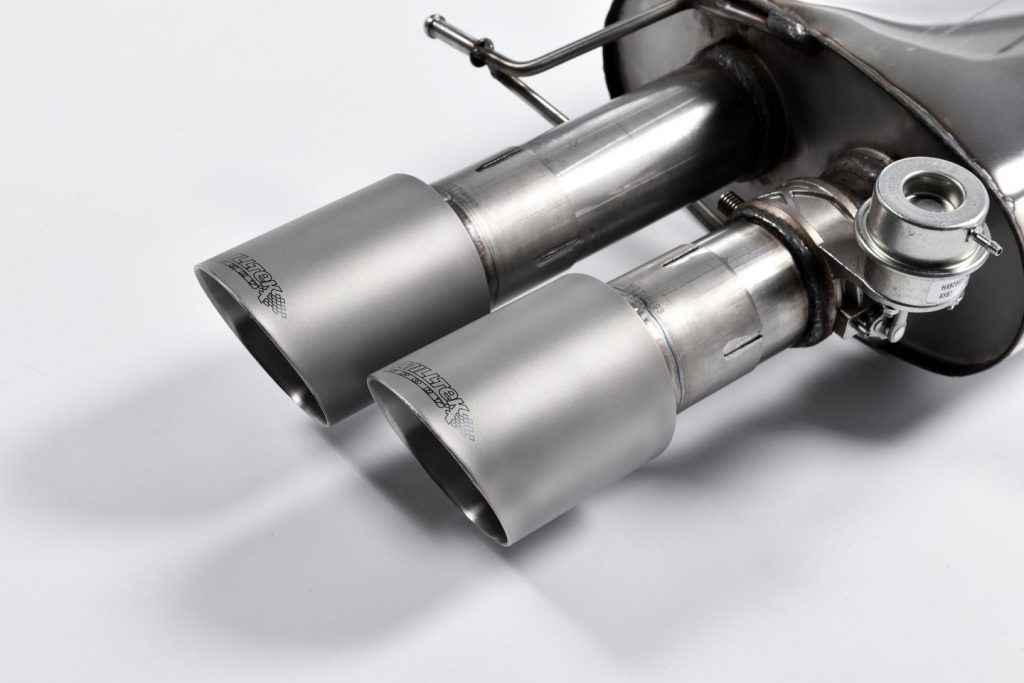
While this used to be the preserve of exotica from Italy, increasingly even humble hot hatches are coming with valved exhausts. This is where the noise level of the exhaust can be controlled from within the car by electronic valves inside the pipework. Milltek offer a range of compatible exhausts, and for selected vehicles, their own remote-control system.
Active Sound

Cars have been coming with electronic sound generators for a little while now. This is where the car generates an exhaust note electronically. While early systems played the noise inside the car through the speaker, cars are starting to come with a speaker inside the exhaust system. Milltek are currently developing their own version of this called Active Sound.
They’re looking at offering this technology on everything from high performance diesels, to electric vehicles. Milltek currently have a Tesla Model X in for development.
What makes of car do Milltek fit?
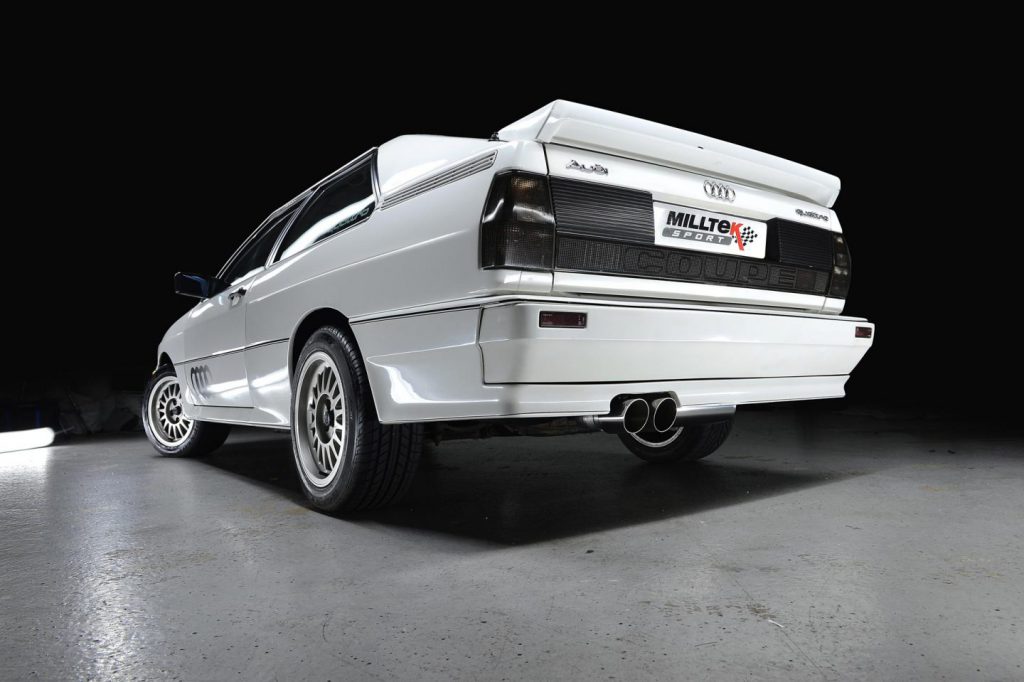
Despite the VAG association (and Milltek do extensively cover Volkswagen, Audi, SEAT, Skoda), Milltek offer a wide range covering everything from Bentley through to Suzuki. The newest performance machinery (currently the Hyundai i30n) is usually covered within a couple of months of hitting the showroom. We’d recommend visiting the relevant section of our website and popping your car details in to see what is available.
